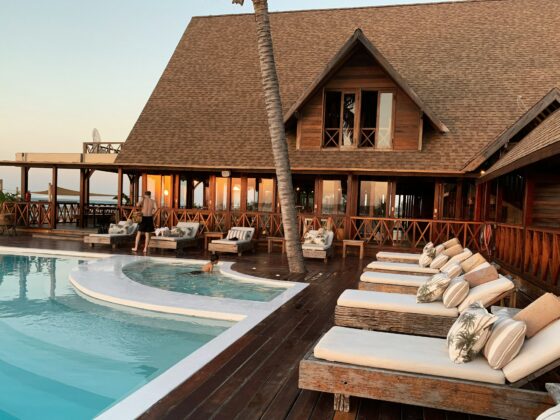
Hotel profit margin, which measures profits as a percent of revenue, is considered a good indicator of the efficiency of hotel operations. In 2023 and 2024, hotel profit margins at both the gross operating profit (GOP) and earnings before interest, taxes, depreciation, and amortization (EBITDA) levels have declined, indicating that both operating and ownership expenses have increased at a greater pace than revenues. Based on CBRE’s February 2025 Hotel Horizons Investment Performance forecast, this trend is expected to continue into 2025 and potentially a few years beyond that.
With sluggish projections of revenue growth and fears of inflation on the rise (University of Michigan, March 2025), all eyes are focused on hotel operating expenses in 2025. In this article, we focus on select operating expenses that were on the rise in 2024 and provide guidance on how to monitor and control them in 2025. The analysis is based on a preliminary sample of 2,600 U.S. hotels that provided data for our 2025 Trends in the Hotel Industry survey.
Before and After GOP
In 2024, the expenses above GOP on the hotel operating statement increased by 4.1 percent year-over-year, greater than the 3.6 percent rise in expenses below GOP during that time. Both metrics are greater than the 2.3 percent increase in total hotel revenue during the year, a trend that was consistent across all property types except limited-service and extended-stay hotels. In general, property managers have greater control over the expenses above GOP versus the expenses below GOP, which are more fixed in nature and controlled by ownership.
Below we highlight operated and undistributed department expenses (above GOP) that increased significantly on a percentage basis during 2024. While some of these expenses may not be significant on a dollar basis, analyzing growth on a percentage change basis, or a per-available-room (PAR) basis, is an indicator of relative variability and therefore a good guide for expenses in need of control.
Rooms (2.2 percent department revenue increase)
Rooms Department expenses are highly variable and therefore, they’re best analyzed on a dollars-per-occupied room (POR) basis. The greatest cost increases within the Rooms Department in 2024 were agency commissions (6 percent) and complimentary food and beverage (3.9 percent). Agency commissions are associated with the channels used by guests to book their rooms, while complimentary F&B is influenced by brand standards and loyalty programs, and the cost of the food and beverages purchased.
Food and Beverage (2.8 percent department revenue increase)
As prices rise at the grocery store, so does the cost of food and beverages at hotels. Surprisingly, the combined purchases of food and beverages in 2024 were 2.3 percent lower than in 2023. However, the decline in the cost of food and beverages was influenced by changes in revenue sources, more so than changes in cost controls. Hotels have reduced their historical restaurant offerings and service levels, while group business has returned. This has resulted in a greater contribution of revenue from buffets and banquets, both of which provide a lower food cost ratio. Further, we observed a decline in beverage revenue during 2024, which led to a decline in alcohol purchases by hotels.
While the cost of food and beverages was on the decline, labor expenses, as well as the cost of operating supplies, increased by 4.5 percent and 9.4 percent, respectively, during the year in this department.
Undistributed (2.3 percent total hotel revenue increase)
The expenses within the undistributed departments are mostly fixed in nature. Therefore, when these expenses are growing at a pace greater than revenue, they can have a severe negative impact on profit margins. Within the undistributed departments, four costs stand out as increasing significantly above the pace of revenue growth in 2024:
• Since credit card commissions are largely charged to the hotel as a percent of revenue, it is surprising that this expense increased by 4.4 percent, while total hotel revenues grew by just 2.8 percent.
• The cost of implementing new technology helped drive Information and Telecommunications Department expenses up by 5.1 percent.
• Franchise-related fees, also charged as a percent of revenue, grew by 3.9 percent. Guest loyalty program charges increased the most among the costs within this expense category.
• Maintenance department costs increased by 5 percent, indicative of the rising cost of labor and supplies, as well as deferred renovation projects.
Labor (2.3 percent total hotel revenue increase)
Labor expenses are allocated to each of the operated and undistributed departments (except Utilities), but since they are the largest operating expense for a hotel, this cost should be analyzed on a discrete basis.
In 2024, the combined costs of salaries, wages, and employee benefits increased by 4.8 percent for the sample. According to the Bureau of Labor Statistics, the average hourly compensation for a hospitality industry employee increased by 4 percent during the year, which implies a .8 percent increase in the hours worked at the average hotel in the sample.
Using this same methodology to analyze trends in hotel labor efficiency over the past six years, we find that the number of hours worked at the typical hotel in our sample is down 7.4 percent since 2019, while the dollars paid for compensation are up 22.1 percent. In summary, hotels are paying more for fewer hours worked, which is indicative of the struggle operators have had to fill open positions, as well as cuts in the services and amenities hotels offer to guests.
Non-Operating Expenses (2.3 percent total hotel revenue increase)
While hotel operators have limited control over expenses below GOP, owners have the ability to make appeals and negotiate new contracts.
• With revenue and profit growth muted, management fees increased by just 1.1 percent for the survey sample in 2024, less than the 2.3 percent growth in revenues. We observed a decline in the number of operators that earned an incentive management fee in 2024 compared to 2023.
• Property tax payments increased by 4.3 percent in 2024 as municipalities seek to replenish their coffers.
• Insurance premiums continue to increase at a double-digit pace, growing by 17.4 percent in 2024.
Cost Containment
Overseeing the operations of 45 hotels around the world, CBRE Hotels Asset Management monitors the performance of hotel operators on behalf of the owners. We provide the following cost-control advice for owners and operators this year:
Labor
The ever-increasing upward trends in labor costs continue to highlight the need for critical oversight on labor productivity, as hotel management companies’ incentives and processes are not critically assessed for efficiency.
With the return of group business, hotels are utilizing more contract labor, and this additional help comes at a significant premium. Labor must be micromanaged, and asset managers are focusing on evaluating each department position by position, and whenever possible, requiring hotels to cross-utilize staff.
The close oversight of staffing by day, by shift, and understanding the number of employees per supervisor or manager will allow an operator to reduce unnecessary positions and right-size the business to increase productivity and have sustainable profit margins.
Guest Service Costs
Commissions are growing almost three times RevPAR. Top-line softness is pushing hotels to rely more on third parties to generate revenue. From OTAs to convention housing intermediaries, the cost of each booking continues to rise.
The cost of loyalty members staying at each hotel is also increasing, and asset managers must scrutinize bookings to ensure the type of business, the cost of each piece of business, and the placement of these bookings maximizes profitability. Other costs associated with serving the needs of loyalty members can be found in each department’s complimentary gifts and services, complimentary F&B, service recovery, and guest amenities expense categories. When added up for the entire hotel, it can translate to hundreds of thousands of dollars spent in the name of service or brand standards. We must return to service excellence to win our guests’ loyalty, as opposed to the number and size of the gifts and free services.
Corporate Resources
The variety of brands and managers within our portfolio enables us to compare each brand and manager’s negotiating power, which gives us the visibility on which hotels are leveraging corporate resources to negotiate contracts and purchases.
Technology
IT systems must be treated like capital expenditures whose ROI must be proven. During the 2025 budget season, we observed some of the highest increases in this line item, thus requiring further scrutiny.
Striking a Balance
Our focus on right-sizing the business is not just about cost-cutting; it is about implementing prudent business practices, eliminating non-essential costs and services, reducing waste, making changes to the workplace to support productivity, and returning to acceptable and sustainable levels of profitability.









